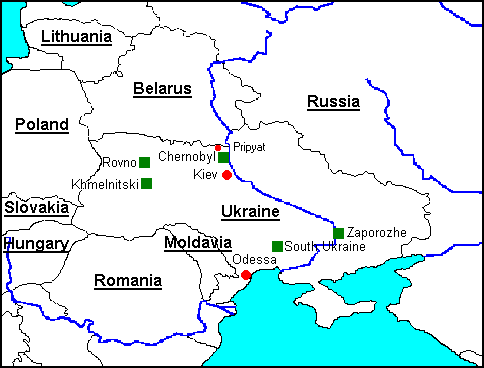▶ How information war can kill: the Chernobyl case (NATO Review) - YouTube
Published on Dec 18, 2014
Maskirovka: Russia's Masterful Use of Deception in Ukraine | Joergen Oerstroem MoellerThe information war which has broken out over Russia’s actions in Ukraine has largely been seen as two sides projecting differing opinions. But the way information is controlled, twisted and spread can have serious effects. We look at how information affected the lives of thousands – possibly millions – of people when it was manipulated following the Chernobyl nuclear disaster – and find some similarities today.
President Putin's game plan in Ukraine becomes clearer day by day despite Russia's excellent, even brilliant, use of its traditional maskirovka. Russia applied maskirovka successfully against Nazi Germany in the later stage of World War II luring the German high command to expect Russian offensives elsewhere than where they actually took place. It stands for deliberately misleading the enemy with regard to own intentions causing the opponent to make wrong decisions thereby playing into your own hand. In today's world this is mainly done through cunning use of networks to shape perceptions blurring the picture and opening up for world opinion to see your view as the correct one legitimizing policy steps you intend to take.
Chernobyl Accident 1986
A part of Ukraine the Russians probably don't want back.
(Updated December 2014)
The April 1986 disaster at the Chernobyla nuclear power plant in Ukraine was the product of a flawed Soviet reactor design coupled with serious mistakes made by the plant operatorsb. It was a direct consequence of Cold War isolation and the resulting lack of any safety culture.
- The Chernobyl accident in 1986 was the result of a flawed reactor design that was operated with inadequately trained personnel.
- The resulting steam explosion and fires released at least 5% of the radioactive reactor core into the atmosphere and downwind – some 5200 PBq (I-131 eq).
- Two Chernobyl plant workers died on the night of the accident, and a further 28 people died within a few weeks as a result of acute radiation poisoning.
- UNSCEAR says that apart from increased thyroid cancers, "there is no evidence of a major public health impact attributable to radiation exposure 20 years after the accident."
- Resettlement of areas from which people were relocated is ongoing. In 2011 Chernobyl was officially declared a tourist attraction. [are you kidding me?!]
Some tragedies never end. Ask people to name a nuclear disaster and most will probably point to Fukushima in Japan three years ago. The nuclear meltdown at Chernobyl in Ukraine was 30 years ago, but the crisis is still with us today. That's because radiation virtually never dies. After the explosion in 1986, the Soviets built a primitive sarcophagus, a tomb to cover the stricken reactor. But it wasn't meant to last very long and it hasn't. Engineers say there is still enough radioactive material in there to cause widespread contamination. For the last five years a massive project has been underway to seal the reactor permanently. But the undertaking is three quarters of a billion dollars short and the completion date has been delayed repeatedly. Thirty years later, Chernobyl's crippled reactor still has the power to kill.
It is very difficult to predict the future of scientific developments, and few would even dare to make predictions extending beyond the next 50 years. However, based on everything we know now, one can make a strong case for the thesis that nuclear fission reactors will be providing a large fraction of our energy needs for the next million years. If that should come to pass, a history of energy production written at that remote date may well record that the worst reactor accident of all time occurred at Chernobyl, USSR, in April of 1986.
In that accident, a substantial fraction of all of the radioactivity in the reactor was dispersed into the environment as airborne dust — its most dangerous form. It is difficult to imagine how anything worse could happen to a reactor from the standpoint of harming the public outside.

No comments:
Post a Comment